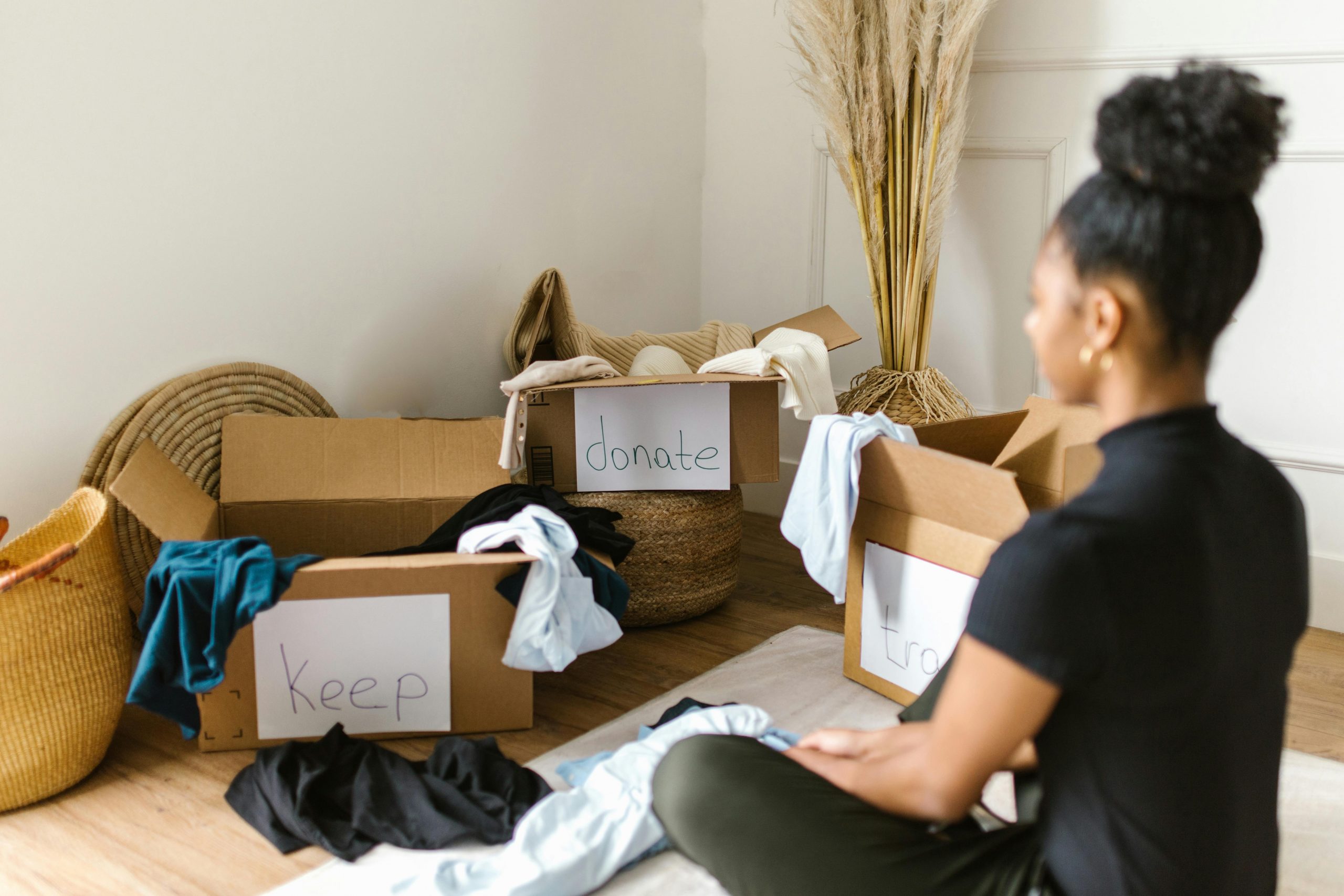Your cart is currently empty!
How to Organize Your Home: A Step-by-Step Guide
OOrganizing your home can feel like an overwhelming task, especially if it’s been a while since you’ve done a deep clean or decluttered. However, with the right approach, the process can be broken down into manageable steps that make it more approachable and achievable. Whether you’re moving into a new space, preparing for a seasonal change, or simply want to refresh your home, this step-by-step guide will help you organize your home from top to bottom. We’ll also share valuable tips on how to maintain that organized feeling long-term so you can enjoy a clutter-free, stress-free space for years to come.
Step 1: Start with a Plan
Before you dive into the organization process, it’s essential to have a plan in place. Organizing a home isn’t something that happens overnight, and having a clear strategy will help you stay on track and prevent you from feeling overwhelmed.
- Break Down the Process: Organizing an entire home can feel daunting, so start by breaking the project into smaller, manageable tasks. Tackle one room or area at a time—whether it’s the living room, kitchen, closet, or bathroom. You might want to focus on one category of items at a time, such as clothes, books, or kitchen gadgets, rather than trying to organize everything all at once.
- Set Realistic Goals: Organizing a home can take time, especially if you’re starting with a lot of clutter. Set realistic goals for yourself. For example, aim to complete one room per week or spend 30 minutes a day decluttering. Celebrating small wins along the way will keep you motivated.
- Create a Timeline: Organize your home over the course of several days or weeks. Don’t rush it—tackling one area at a time will ensure that you stay focused and do a thorough job. Establishing a timeline will also help you avoid burnout.
Step 2: Declutter Each Room
Decluttering is the first and most important step in any organization process. It’s hard to organize when there’s too much stuff, so decluttering will help you clear out unnecessary items, making it easier to store and organize the things that really matter.
- Start with Easy Areas: Begin by tackling areas that are easiest to declutter, such as countertops, kitchen drawers, or your coffee table. Clearing out these spaces first will give you quick wins and provide momentum for more challenging tasks.
- Sort by Categories: As you go through each room, sort items into categories such as “keep,” “donate,” “sell,” or “discard.” Be ruthless in deciding what to keep—if you haven’t used it in a year or if it no longer serves a purpose, it might be time to let it go.
- One Item at a Time: If you’re feeling overwhelmed, consider the “one in, one out” rule—every time you bring something new into your home, get rid of something old. This prevents clutter from piling up in the future.
- Use the Four-Box Method: This method involves placing four boxes or bags in each room: Keep, Donate, Trash, and Relocate. As you go through your items, put them in the appropriate box. This makes the decluttering process systematic and ensures nothing is left behind.
Step 3: Organize by Function and Frequency
Once you’ve decluttered, the next step is to organize what’s left. To maximize space and keep things functional, it’s important to organize your items based on how frequently you use them and what makes sense for each space.
- Group Similar Items: Group like items together in each room. For instance, in the kitchen, keep all baking supplies in one area, or in your bedroom, organize clothing by category (e.g., pants, shirts, and sweaters). This makes it easy to find what you need without having to dig through piles of things.
- Store Items by Frequency of Use: Items you use most frequently should be easily accessible. For example, keep your everyday dishes, spices, or cleaning supplies at eye level in the kitchen or pantry. Less frequently used items, like holiday decorations or seasonal clothing, can be stored in harder-to-reach places.
- Use Containers and Labels: Invest in storage containers, bins, baskets, and organizers to keep smaller items contained and organized. Clear containers allow you to see what’s inside, and labeling each container ensures that everything has its place and can be easily found later.
- Optimize Storage Solutions: Maximize closet and drawer space by using dividers, shoe racks, over-the-door hooks, and under-bed storage bins. Utilize vertical space, such as shelves or hanging organizers, to keep things off the floor and make the most of every square inch.
Step 4: Create an Efficient Storage System
Once you’ve sorted and grouped your items, it’s time to create an efficient storage system. Whether you’re working with a small space or a larger home, the key to long-term organization is ensuring that everything has a designated place.
- Designate Zones: Assign specific areas for certain tasks or categories of items. For example, in your office, designate a space for paperwork, a drawer for office supplies, and a file system for important documents. In the kitchen, dedicate cabinets or drawers for cookware, utensils, and pantry items.
- Maximize Vertical Space: In smaller rooms, make use of wall space by installing shelves or hooks to store items like books, plants, or kitchenware. This keeps things off the floor and frees up more space for other uses.
- Use Multi-Functional Furniture: Look for furniture pieces that can serve multiple purposes, like storage ottomans, beds with built-in drawers, or coffee tables with hidden compartments. These pieces can help you store items out of sight without sacrificing style.
- Rotate Seasonal Items: Store seasonal items (e.g., winter clothes, holiday décor, or summer gear) in bins or vacuum-sealed bags. Rotate them in and out of storage as needed, keeping them organized and easily accessible when it’s time to use them again.
Step 5: Maintain an Organized Home Long-Term
Organizing your home is a big accomplishment, but maintaining it over time requires ongoing effort and habits that keep clutter from creeping back in. Here are some tips for keeping your home organized long-term:
- Establish Daily Habits: Create a daily routine that includes small organizational tasks. For example, spend 10-15 minutes each day tidying up common areas like the kitchen or living room. Make the bed every morning and do a quick sweep of each room before bed. These small actions will prevent clutter from building up.
- Schedule Regular Decluttering Sessions: Set aside time every few months to reassess your belongings and declutter. You might find that your needs have changed, and certain items are no longer necessary. By doing regular check-ins, you’ll prevent your home from becoming cluttered again.
- Stay Consistent with Organization: Once you’ve organized a space, make sure everyone in the household understands where things belong. Encourage family members or roommates to follow the system you’ve put in place and put things back in their designated spots after use.
- Adopt the “One In, One Out” Rule: As mentioned earlier, this simple rule helps to keep clutter in check. For every new item you bring into your home, make sure you remove something that’s no longer needed. This will help you maintain an organized space without adding to the chaos.
Step 6: Keep Your Home Clean and Clutter-Free
An organized home is one that’s easy to clean and maintain. Once everything is in its place, regular cleaning will become simpler and more efficient.
- Clean as You Go: Incorporate cleaning into your daily routine. Wipe down surfaces, sweep the floor, and keep high-traffic areas tidy. This ensures that your home stays clean and organized with minimal effort.
- Incorporate a Weekly Cleaning Schedule: Set aside time once a week to do deeper cleaning tasks, such as vacuuming, dusting, and cleaning the bathroom. Having a designated cleaning day ensures that you maintain your home’s cleanliness and prevents dust and dirt from building up.
Conclusion: Enjoy Your Organized, Clutter-Free Home
Organizing your home doesn’t have to be a stressful or overwhelming process. By following these step-by-step guidelines—starting with decluttering, then organizing by function and frequency, creating efficient storage systems, and establishing long-term habits—you can transform your home into a well-organized, functional, and enjoyable space. With regular upkeep and smart organizational strategies, your home will remain clutter-free, allowing you to enjoy a more peaceful, tidy environment for years to come.


Leave a Reply